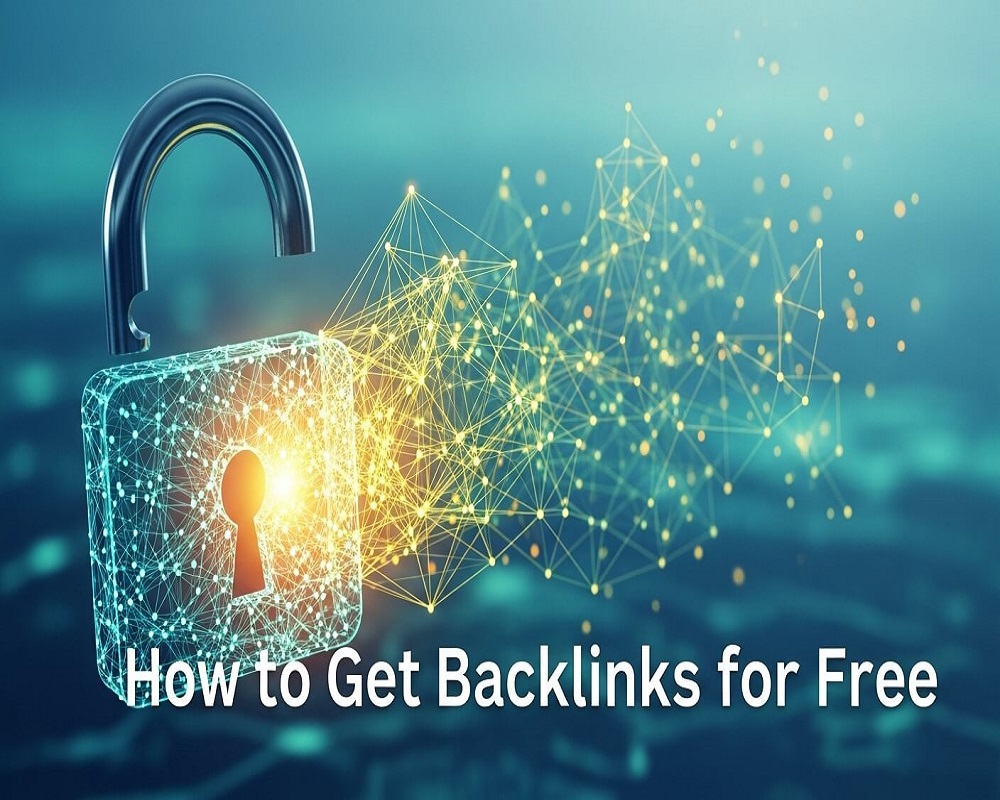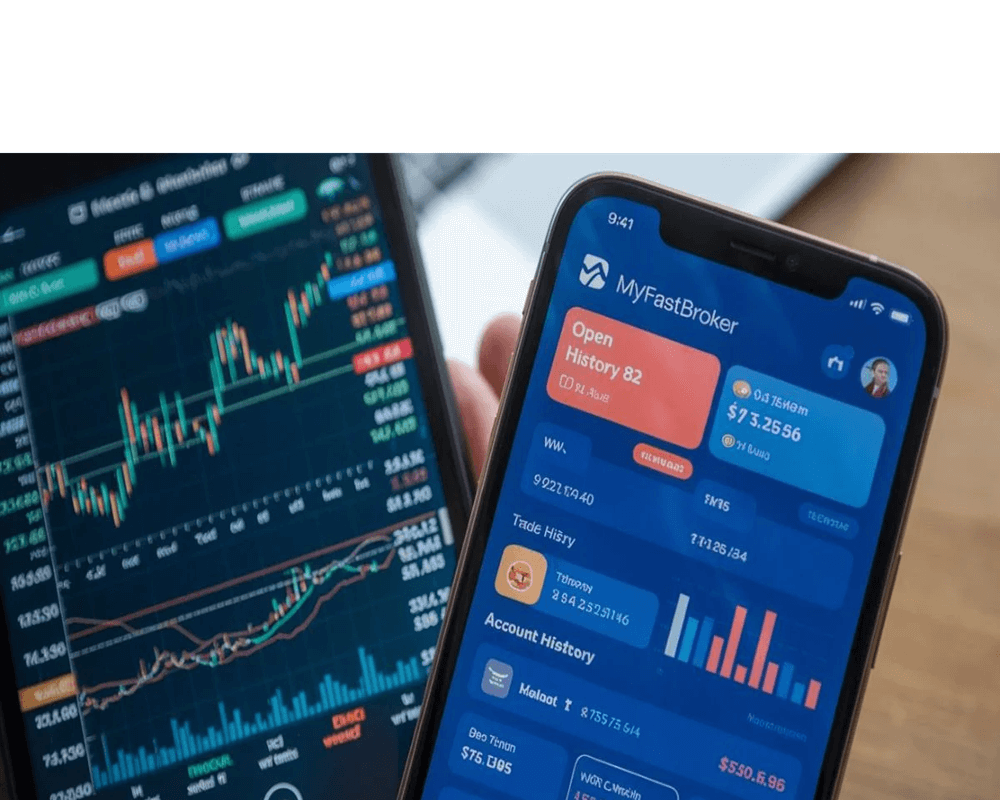Backlinks remain a cornerstone of search engine optimization (SEO), acting as digital endorsements that boost your website’s authority, rankings, and traffic. For website owners, bloggers, or digital marketers wondering how to get backlinks for free, the good news is that with creativity, strategy, and persistence, you can build a robust backlink profile without spending a dime. Backlinks are hyperlinks from external websites pointing to yours, signaling to search engines like Google that your content is valuable and trustworthy. This comprehensive 3000-word guide explores 10 proven methods to earn high-quality backlinks for free, offering step-by-step instructions, practical examples, and a detailed FAQ section addressing high-volume questions. Whether you’re a beginner or an experienced SEO professional, these strategies will help you enhance your site’s visibility and establish topical authority in your niche.
What Are Backlinks and Why Are They Important?
Backlinks, also known as inbound links, are links from external websites that direct users to your site. They function as votes of confidence, influencing search engine algorithms to assess a site’s relevance and authority. There are two primary types: dofollow links, which pass SEO value (or “link juice”), and nofollow links, which don’t but can still drive traffic and enhance brand exposure. High-quality backlinks from reputable, relevant sites can significantly improve your domain authority, boost keyword rankings, and attract referral traffic. Conversely, links from spammy or irrelevant sites can harm your SEO, making quality more critical than quantity.
Beyond SEO, backlinks offer additional benefits: increased credibility, networking opportunities, and greater visibility within your niche. Earning them for free requires effort and strategic planning, but the payoff is long-term growth. Let’s dive into the 10 proven methods to acquire free backlinks, each designed to align with user needs and search engine standards.
Method 1: Create High-Quality, Linkable Content
Creating exceptional, shareable content—often called “link bait”—is one of the most effective ways to earn backlinks organically. This content should be valuable, unique, and relevant to your audience, encouraging other websites to link to it naturally.
Focus on formats like in-depth guides, original research, data-driven reports, case studies, or free tools. Research trending topics in your niche using free tools like Google Keyword Planner or by monitoring social media discussions to identify content gaps.
Steps to Implement:
- Identify high-demand topics or gaps in your niche through keyword research or competitor analysis.
- Create comprehensive content (1000-2000 words) with actionable insights, supported by visuals like infographics or charts.
- Optimize for SEO by incorporating your target keyword (e.g., “how to get backlinks for free”) in the title, headings, and naturally throughout the text.
- Promote your content via social media, email newsletters, and relevant online communities to increase its visibility.
Example: A fitness blog could publish a “Complete Guide to Home Workouts” with downloadable workout plans, attracting links from health and wellness sites. Long-form content tends to earn more backlinks due to its depth and utility.
Tips: Focus on evergreen topics to ensure long-term linkability. Use internal linking to distribute authority across your site. Share your content in niche-specific groups to spark initial interest. This method aligns with search intents like “create link-worthy content” and establishes your site as a go-to resource.
Method 2: Guest Posting on Relevant Sites
Guest posting involves writing articles for other websites in your niche, typically including a backlink to your site in the author bio or content body. It’s a powerful, free strategy to gain exposure, build authority, and secure valuable backlinks.
Search for opportunities using queries like “[your niche] + write for us” or “[your niche] + guest post guidelines.” Prioritize sites with strong relevance and engaged audiences.
Steps:
- Identify 10-20 reputable blogs accepting guest posts and review their submission guidelines.
- Craft a personalized pitch email proposing a unique, value-driven topic tailored to their audience.
- Write a high-quality article (800+ words) with a natural backlink in the bio or contextually within the content.
- Follow up politely if you don’t receive a response within a week.
Example: A tech blogger could contribute a post on “Top AI Tools for Small Businesses” to a digital marketing blog, including a link to their AI software review page. This approach has helped many bloggers secure high-authority backlinks.
Tips: Avoid low-quality or spammy sites to protect your SEO. Build relationships with editors for recurring opportunities. This method satisfies search intents like “guest blogging for backlinks” and enhances your expertise by associating with trusted platforms.
Method 3: Broken Link Building
Broken link building involves finding dead links (e.g., 404 errors) on other websites and suggesting your content as a replacement. It’s a win-win: you earn a free backlink, and the site owner improves their user experience.
Use free tools like the Check My Links Chrome extension to identify broken links on relevant pages.
Steps:
- Search for resource-heavy pages in your niche using queries like “[your niche] + resources” or “[keyword] + links.”
- Scan these pages for broken links using a browser extension or manual checks.
- Create or identify a piece of content on your site that matches or improves upon the broken link’s topic.
- Email the site owner: “I noticed a broken link on your [page URL]. My [resource title] covers the same topic and could be a great replacement.”
Example: A travel blogger might find a broken link on a “Best Budget Destinations” page and suggest their updated “Top 10 Affordable Travel Spots for 2025” article. This tactic often yields high-authority backlinks, especially from educational or government sites.
Tips: Personalize outreach emails to improve response rates (aim for 20-30% success). Target high-quality sites to ensure valuable links. This method aligns with intents like “broken link building tutorial” and strengthens your site’s topical relevance.
Method 4: Resource Page Outreach
Resource pages are curated lists of helpful links, making them ideal targets for free backlinks. Many websites maintain these pages to provide value to their audience, and you can pitch your content for inclusion.
Search for opportunities using queries like “[your niche] + resource page” or “[keyword] inurl:resources.”
Steps:
- Compile a list of 15-20 resource pages relevant to your niche.
- Ensure your site has a high-quality resource (e.g., a guide, tool, or infographic) that fits the page’s theme.
- Email the site owner: “Your [resource page] is fantastic! My [content title] would be a great addition for your audience.”
- Follow up if needed, keeping the tone professional and concise.
Example: A gardening blog could pitch a “Guide to Organic Pest Control” to a resource page on sustainable farming, earning a contextual backlink. This tactic works well for niche directories and educational sites.
Tips: Focus on sites with strong authority and avoid overused directories. This method addresses intents like “find resource pages for backlinks” and builds your site’s credibility through relevant placements.
Method 5: Respond to Journalist Queries (HARO)
Platforms like Help a Reporter Out (HARO, now Connectively) connect journalists with experts, offering opportunities for free backlinks from high-authority news sites. By providing valuable insights, you can earn a link in published articles.
Sign up for free and monitor daily query emails for relevant opportunities.
Steps:
- Register on Connectively and set up alerts for your niche.
- Respond to queries with concise, expert-level answers (100-200 words) that showcase your knowledge.
- Include a link to a relevant page on your site in your response, if permitted.
- Follow the journalist’s guidelines to increase your chances of being featured.
Example: A cybersecurity expert could answer a query about “Top Data Privacy Tips” and secure a backlink from a major publication. This approach has helped small businesses gain exposure on reputable sites.
Tips: Respond quickly (within 24 hours) and tailor your pitch to the journalist’s needs. This method aligns with intents like “HARO for backlinks” and boosts your expertise by associating with trusted media outlets.
Method 6: Leverage Online Communities and Forums
Participating in niche forums and communities like Reddit, Quora, or industry-specific platforms can generate backlinks while establishing your authority. Many allow links in profiles or contextual answers.
Search for communities using queries like “[your niche] + forum” or “[keyword] + discussion.”
Steps:
- Join 5-10 active forums or platforms relevant to your niche.
- Engage authentically by answering questions or sharing insights without spamming.
- Include a link to your site in your profile or within relevant, high-value responses.
- Build a reputation over time to increase link acceptance.
Example: A finance blogger answering a Quora question about “Best Budgeting Tools” could link to their detailed budgeting guide, driving traffic and earning a backlink. Niche forums like those for marketers or developers often allow contextual links in helpful posts.
Tips: Avoid overlinking to prevent bans. Focus on providing value to align with intents like “forum backlink strategies” and enhance your trustworthiness.
Method 7: Create Infographics and Visual Content
Infographics and visual content are highly shareable, making them excellent for attracting backlinks. Websites often embed infographics with a link back to the source.
Use free tools like Canva to create professional visuals.
Steps:
- Research trending topics in your niche for data-driven infographics.
- Design a visually appealing infographic with clear, sourced data.
- Embed a link to your site in the infographic or its accompanying blog post.
- Share it on social media and reach out to relevant blogs for inclusion.
Example: A nutrition blog could create an infographic on “Daily Vitamin Requirements” and pitch it to health blogs, earning embedded backlinks. Infographics attract links because they’re easy to share and reference.
Tips: Include an embed code to simplify linking. This method targets intents like “visual content for backlinks” and positions your site as a valuable resource.
Method 8: Collaborate with Influencers and Bloggers
Collaborating with influencers or bloggers in your niche can yield free backlinks through content partnerships, interviews, or mentions.
Identify collaborators via social media or blog searches.
Steps:
- Find 10-15 influencers or bloggers with engaged audiences in your niche.
- Propose a collaboration, such as a co-authored post, interview, or expert roundup.
- Ensure the collaboration includes a backlink to your site.
- Promote the content jointly to maximize exposure.
Example: A travel blogger interviewing a local tour guide could earn a backlink from the guide’s website. Roundups like “20 Experts Share SEO Tips” often result in multiple backlinks from participants.
Tips: Choose collaborators with complementary audiences. This method aligns with intents like “influencer collaboration for SEO” and builds your network.
Method 9: Submit to Niche Directories
Niche-specific directories, unlike general ones, can provide valuable backlinks if they’re reputable and relevant.
Search for “[your niche] + directory” or “[keyword] + submit site.”
Steps:
- Identify 5-10 high-quality directories in your industry.
- Verify their authority and relevance to avoid spammy sites.
- Submit your site with a detailed description and relevant category.
- Monitor for approval and track traffic.
Example: A pet blog could submit to a pet care directory, gaining a contextual backlink. Niche directories remain effective when carefully selected.
Tips: Avoid low-quality directories to protect SEO. This method satisfies intents like “niche directory backlinks” and enhances topical relevance.
Method 10: Utilize Social Media Profiles and Bios
Many social media platforms allow links in profiles or posts, offering easy, free backlinks. While often nofollow, they drive traffic and visibility.
Focus on platforms like LinkedIn, Twitter, or Pinterest.
Steps:
- Optimize your profiles on 3-5 platforms with a link to your site.
- Share high-value content regularly, including links to your blog posts or resources.
- Engage with followers to increase profile visits and clicks.
- Use bio links strategically to point to key pages.
Example: A photographer could link to their portfolio in their Instagram bio, driving traffic and earning a nofollow backlink. LinkedIn articles with links to your site can attract niche audiences.
Tips: Update links regularly to promote new content. This method targets intents like “social media for backlinks” and boosts brand exposure.
FAQs: Your Top Questions About Free Backlinks Answered
Below are numbered answers to the most common, high-volume questions about getting backlinks for free, addressing key user intents and clarifying concepts.
- What are the best free ways to get backlinks?
Top methods include creating linkable content (guides, infographics), guest posting, broken link building, resource page outreach, and using platforms like Connectively or forums. These strategies prioritize quality and relevance, ensuring sustainable SEO benefits. - How long does it take to earn free backlinks?
Results vary by method. Guest posting or Connectively responses can yield backlinks in 1-4 weeks, while linkable content may take 2-6 months to attract organic links. Consistent effort (5-10 hours weekly) typically shows traction within 2-3 months. - Are free backlinks as effective as paid ones?
Yes, if sourced from high-quality, relevant sites. Free backlinks earned through guest posts or organic mentions often carry equal or greater SEO value than paid links, which can risk penalties if not disclosed properly. - How do I find high-quality sites for backlinks?
Use Google searches like “[your niche] + write for us” or “[keyword] + resources” to find relevant sites. Look for active audiences, relevant content, and strong authority to ensure valuable links. - Can nofollow backlinks help my SEO?
Nofollow links don’t pass direct SEO value but drive referral traffic, increase visibility, and can lead to secondary dofollow links. For example, a nofollow link from a forum might inspire a blogger to link to you organically. - How many backlinks do I need to improve rankings?
The number depends on your niche and competition. Aim for 10-20 high-quality, relevant backlinks rather than hundreds of low-quality ones. Quality and relevance are more impactful than quantity. - Is broken link building still effective in 2025?
Yes, it remains effective because it solves a problem for site owners while earning contextual links. Success hinges on targeting relevant, high-authority sites and offering valuable replacement content. - How do I avoid penalties when building backlinks?
Steer clear of spammy directories, link farms, or excessive reciprocal linking. Focus on natural, relevant backlinks from reputable sites and ensure your content adds value to users. - Can social media backlinks boost my rankings?
Social media links are typically nofollow, so they don’t directly improve rankings. However, they increase traffic, engagement, and visibility, which can lead to organic backlinks, indirectly aiding SEO. - What free tools can I use to find backlink opportunities?
Use Check My Links for broken link building, Google Keyword Planner for content ideas, and social media platforms for community engagement. Manual searches like “[niche] + guest post” also uncover opportunities. - How do I measure the success of my backlink efforts?
Track metrics like referral traffic, domain authority growth, and keyword ranking improvements using free tools like Google Analytics or Google Search Console. Monitor new backlinks monthly to assess progress. - What types of content attract the most backlinks?
Original research, in-depth guides, infographics, and free tools are most likely to attract backlinks due to their value and shareability. Content that solves specific problems or provides unique data performs best.
Conclusion
Building backlinks for free is a powerful way to enhance your website’s SEO, authority, and visibility without financial investment. By leveraging strategies like creating linkable content, guest posting, broken link building, and community engagement, you can secure high-quality backlinks that align with search engine standards and user needs. Start with 1-2 methods, such as publishing a comprehensive guide or pitching a guest post, and scale your efforts over time. Consistency, quality, and relevance are critical—focus on providing value in every link-building activity. With these 10 proven methods and answers to high-volume questions, you’re well-equipped to elevate your site’s performance and establish yourself as a trusted authority in your niche.
Saad Raza is an SEO specialist with 7+ years of experience in driving organic growth and improving search rankings. Skilled in data-driven strategies, keyword research, content optimization, and technical SEO, he helps businesses boost online visibility and achieve sustainable results. Passionate about staying ahead of industry trends, Saad delivers measurable success for his clients.





